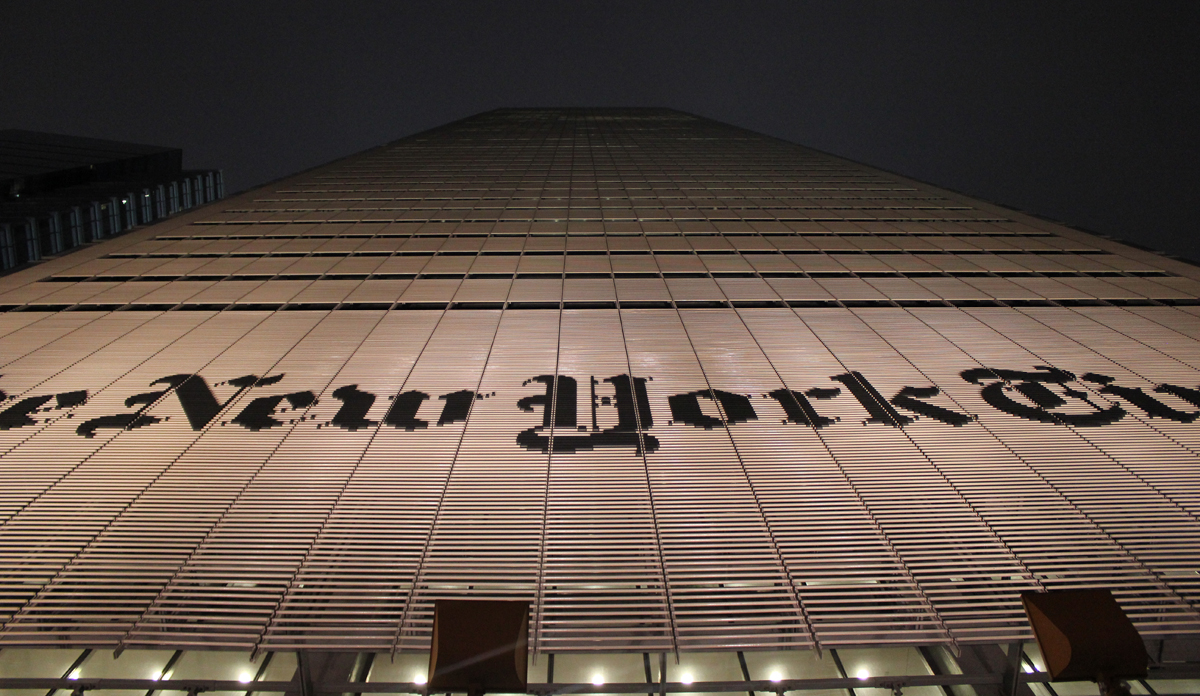About 70 positions will be cut or relocated from The New York Times’ Paris operation as the newspaper eliminates its editing and pre-press jobs in France, the newspaper announced Tuesday.
Citing a desire to “simplify our production process” amid a “shifting future” that would leave the International New York Times in limbo without intervention, the Times will trim production jobs but leave the news bureau intact, according to a memo from a trio of masthead editors including Executive Editor Dean Baquet.
We regret that the proposal includes the elimination of jobs in Paris and we want to express our appreciation to colleagues – past and present – who through their hard work, have contributed to maintaining a tradition of excellence in global journalism at the IHT and INYT.
In eliminating the jobs, The New York Times follows a trend toward consolidation of production industry wide. Several far-flung media companies — like McClatchy, New Media Investment Group and Gannett — have established regional hubs where their editions are designed and printed.
“The consolidation of editing and pre-press functions is consistent with industry practice, as publishers seek to control costs and focus newsroom resources on reporting instead of production,” said Alan Mutter, a newspaper consultant who runs the blog “Reflections of a Newsosaur.” “It works especially well when deadline work can be time-shifted around the world — as the NYT aims to do. What’s good for the company, however, is bad for the affected individuals. This is one of the many reasons that nearly half of newspaper journalism jobs have been lost in the last decade.”
For The New York Times, editing and pre-press duties will be handled from Hong Kong and New York, according to a memo from editors including Joseph Kahn, the paper’s assistant masthead editor for international.
The cuts will be accompanied by a redesign of the newspaper that will include “more context, analysis, opinion and long-form journalism,” according to the memo. It comes as The New York Times is making a major international push to reach audiences around the world by various means, including translating its articles into non-English languages.
The Paris operation is a relic of the global edition’s roots as the International Herald Tribune. For years, the Herald Tribune was a joint operation of the Times and The Washington Post before the Times took control in 2003. (The New York Herald Tribune itself went out of business in the 1960s).
In the print era, the Herald Tribune was widely available on newsstands throughout Europe and elsewhere. Its content was a mix of some original material and many stories and columns drawn from the Times and Post — often running several days later than they had in the U.S. The editorial mix was targeted to Americans traveling or working abroad.
Shifting to a digital and print mix was especially challenging, and the operation lost substantial money through the 2000s.
The Times has now shifted to a digital strategy for international distribution and sees that market as its most promising for paid digital subscriptions. While the content and ad mix are somewhat different, there is no longer much logic to running the edition from Paris.
In sum, the initiative clearly signals the emerging “print last” view held by The New York Times and other digitally minded news organizations, said Ken Doctor, an industry analyst who writes for POLITICO Media and Nieman Lab.
“While print is hugely important as a revenue source for all papers — no matter their digital audience and revenue growth — it is undeniably the last output of the day,” Doctor said. “That means both a sequestration of staff dedicated to that last output, while everyone else in the newsroom can produce for the current day, and inevitable changes in organization.”






